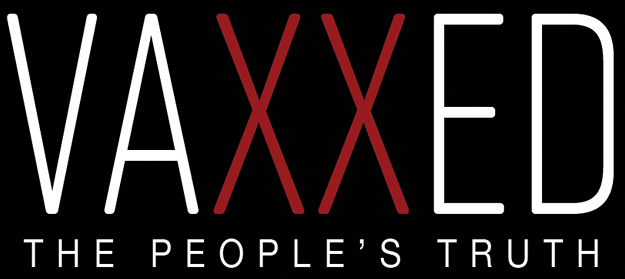



This website contains parental reports of injury/death from the CDC childhood vaccine schedule pre-Covid.
To see the injury/death from Covid shots see Virus-Hoax.com
(over 1 million "excess" deaths in the US alone)
To see the newest stories being collected now on the Vax-unVax tour, see Childrens Health Defense
Following is an excerpt from a longer article by Roman Bystrianyk which goes into more detail on the antibody fallacy.
"Something you may have never been told was that by the time of the vaccine introduction measles was considered generally a mild disease. This was written about in the medical literature at the time just before the vaccine was introduced in the late 1950s. (4)
Alexander Langmuir, MD, is known today as "the father of infectious disease epidemiology." In 1949 he created the epidemiology section of what became the CDC. Even Langmuir knew that by the time vaccine was developed, measles mortality in the United States had already declined to minimal levels when he described measles as a... self-limiting infection of short duration, moderate severity, and low fatality... (5)
When the vaccine was introduced in 1963 out of 6 New England states there were only 5 deaths attributed to measles. (6) Bottom line: measles was not much of a threat by the time the measles vaccine was introduced. Yet, you would never know this since there is an instant panic as soon as a single child appears with a red dot.
If you read the general information for the CDC you'll read about antibodies. (7) This is the corner stone of vaccinology: antibody stimulation. But this is really a kindergarten level description of the immune system. It is vastly more complex and even immunologists don't really understand how it works.
"The immune system remains a black box," says Garry Fathman, MD, professor of immunology and rheumatology and associate director of the Institute for Immunology, Transplantation and Infection. It's staggeringly complex, comprising at least 15 different interacting cell types that spew dozens of different molecules into the blood to communicate with one another and to do battle. Within each of those cells sit tens of thousands of genes whose activity can be altered by age, exercise, infection, vaccination status, diet, stress, you name it. That's an awful lot of moving parts. And we don't really know what the vast majority of them do, or should be doing. (8)
Without really understanding the immune system, vaccinologists began injecting people with various types of vaccines since the mid-1900s. And what was even known at about the time the measles vaccine was being introduced was that antibodies weren't even needed for a full recovery from measles!
One of the most disconcerting discoveries in clinical medicine was the finding that children with congenital agamma-globulinaemia, who could make no antibody and had only insignificant traces of immunoglobulin in circulation, contracted measles in normal fashion, showed the usual sequence of symptoms and signs, and were subsequently immune. (9) The Lancet, 1960
What? No antibodies needed to fully recover from measles? That revelation ruins the simple story of antibodies are the immune system. The truth is that the immune system can be described as being made of two parts -- the humoral part (antibodies) and the cellular part (natural killer cells, etc.) It's the cellular immune system that relies on good nutrition and that in large measure explains why the death rate had improved so dramatically before the advent of the measles vaccine. Vitamins. Good nutrition is no doubt what brought about the 99.9% improvement in mortality.
Unfortunately, to this day vaccine developers and proponents really don't understand exactly how the immune system functions. Worse, they use antibodies to measure immunity when the truth is that antibodies after measles are really just a marker of what happened and cannot be the sole measure of future protection.
So what about vitamins and measles? Back in the 1940s and 1950s a Dr. Klenner was using vitamin C successfully in treating measles. He published his results in medical journals of the time.
In the Spring of 1948 measles was running in epidemic proportions in this section of the country. Our first act, then, was to have our own little daughters play with children known to be in the "contagious phase." When the syndrome of fever, redness of the eyes and throat, catarrh [inflammation of a mucous membrane], spasmodic bronchial cough, and Koplik spots [measles skin spots] had developed and the children were obviously sick, vitamin C was started. In this experiment it was found that 1000 mg every four hours, by mouth, would modify the attack . . . When 1000 mg was given every two hours all evidence of the infection cleared in 48 hours . . . the drug (vitamin C) was given 1000 mg every 2 hours around the clock for four days . . . These little girls did not develop the measles rash during the above experiment and although exposed many times since still maintain this "immunity." (10)
It's also known that vitamin A stores are rapidly used up during an attack of measles and after measles vaccination. Single doses of vitamin A are known to dramatically decrease the death rate by 70 to 90 percent. (11) There is lots of scientific information on nutrition and the immune system that you could spend a lifetime reading.
Another point that is rarely discussed with measles is that when you got measles naturally you were generally immune for life -- good, solid, lifelong immunity. But, with the measles vaccine you have a different story -- the story of waning immunity. This means that over time the humoral immune system protection (antibodies) afforded by the vaccine will decrease. A 2009 study published in Proceedings of the Royal Society investigated what could happen with waning measles vaccine immunity even with high vaccine coverage among children. They predicted that, after a long disease-free period in the population, the introduction of infection will lead to far larger epidemics than predicted by standard models.
When immunity wanes, vaccination has a far more limited impact on the average number of cases. While this observation has clear public-health implications, the dynamic consequences of the interaction between vaccination, waning immunity and boosting are far more striking. For high levels of vaccination (greater than 80%) and moderate levels of waning immunity (greater than 30 years), large-scale epidemic cycles can be induced. (12)
And when you and your doctor think it is measles is it even measles? Measles incidence always relied on a doctor's clinical diagnosis with no laboratory confirmation. Now that laboratory tests are available, most "measles" cases are now found not to be measles. When you think you have measles you really have MLI (measles-like illness.)
MLI (Measles-Like Illness) is common, particularly in younger age groups, and can be caused by a variety of pathogens that are difficult to differentiate clinically without laboratory guidance. In order of frequency, other common viral causes of rash-like illness -- parvovirus B19, rubella, cytomegalovirus, and Epstein-Barr virus -- were identified in our study. (13)
So just how accurate were the statistics of measles incidence in the 1950s and after? As an editor questioned in 1997, how could the effectiveness of the measles vaccine be known if diagnosing measles is so difficult?
Measles is wrongly diagnosed in 97 per cent of cases, according to new data from the Public Health Laboratory Service. We are not saying for one minute that GPs [General Practioners] are poor at making diagnosis; these findings show how inherently difficult it is to make a diagnosis based on clinical symptoms alone. Any doctor would find it difficult to differentiate between viruses. Editor: It would be interesting to know how long the misdiagnosis of measles has been occurring? Perhaps the last thirty years or more? In which case how can they be sure of the effectiveness of the measles vaccine? (14)
Aseptic meningitis, or nonbacterial meningitis, is a condition in which the layers lining the brain become inflamed. In the early 1990s, a mass immunization campaign in Brazil deployed a modern product; the highly attenuated MMR vaccine. The use of that vaccine on a large scale over a short period of time made it possible to detect a significant increase in aseptic meningitis that is more difficult to see when vaccination is spread out over longer periods. (15)
So to recap:
I've only scratched the surface of all the information that is available in the scientific literature. And there is so much more to the story than can be mentioned..." Read more at: "Crucifying the Vaccine Heretics" by Roman Bystrianyk, co-author of Dissolving Illusions
 |